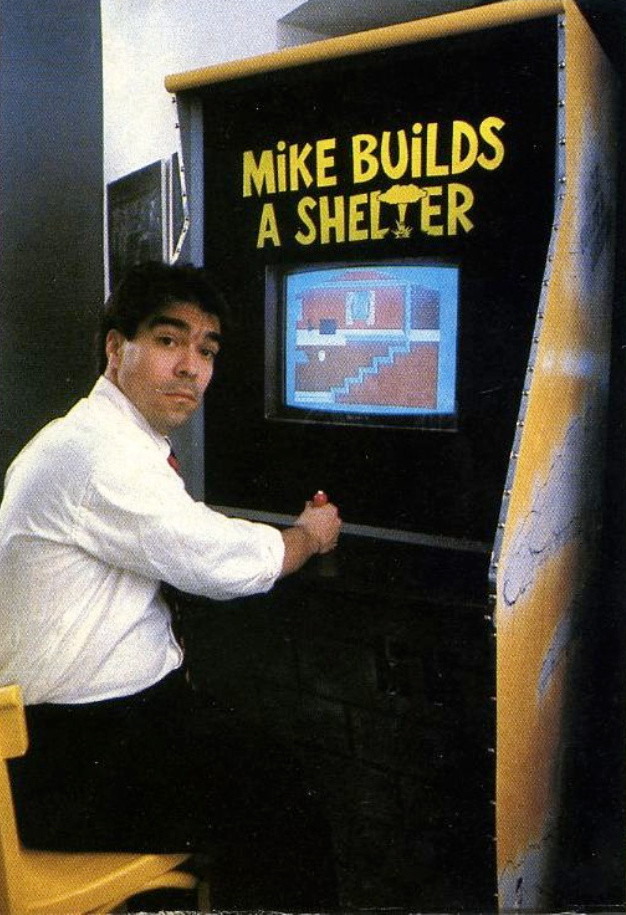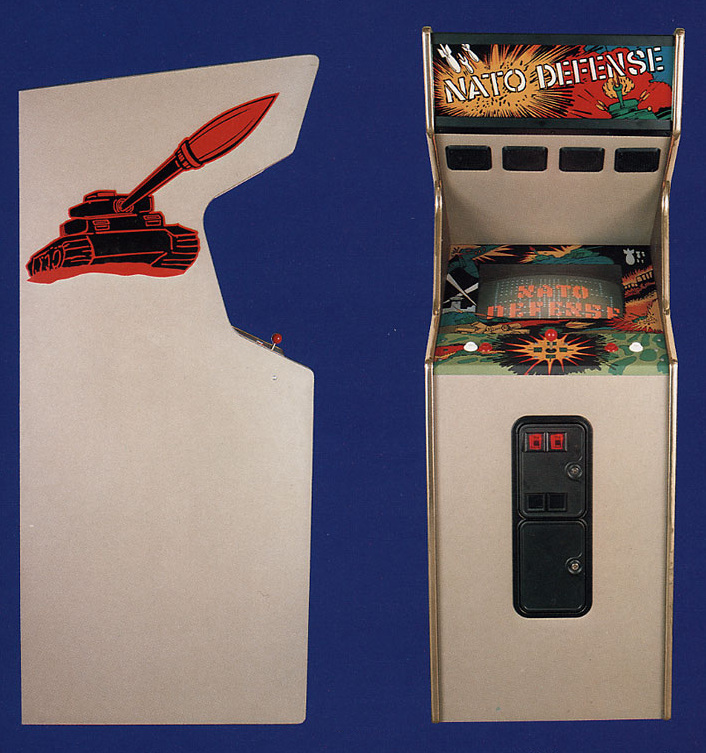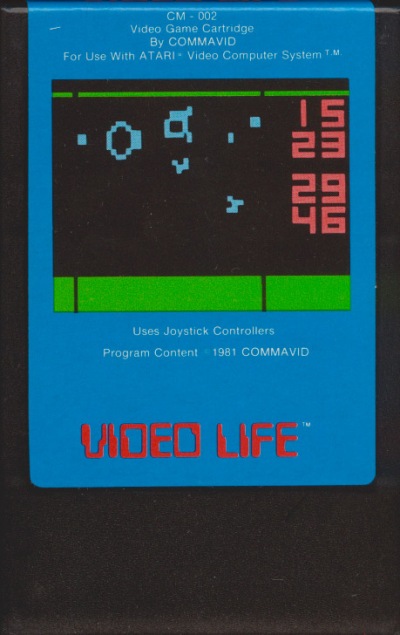Show #32 explores the history of experiments in art video games. Today, there is a booming indie game industry, and experimental video game courses are
taught at universities; but these fields largely emerged in the last decade. Before 2005, instances of experimental or art video games are limited, and
before the 1990s, they are quite rare. Whether created by artists, programmers, or hobbyists, what often separates these games from their commercial counterparts is
their departure from the typical goal-and-reward model of gameplay, and many of the games presented in
Show #32 are anticlimactic, unwinnable, un-fun, or all of the
above. Some works presented in
Show #32 subvert conventional video game mechanics and aesthetics by being outright modifications of popular commercial works like
Quake or
Super Mario Bros.
One of the earliest experimental video games is
Conway's Game of Life, which is a game-as-thought-experiment conceived of by mathematician John Horton Conway in 1970
to produce two-dimensional cellular automata. Conway's game can be envisioned as an infinite checkerboard with only one color of checkers. The game begins by placing
as many checkers as desired anywhere on the board. After the player makes an initial move, there is no more interaction, and the game plays itself. Each round, checkers
are automatically added and removed to the board according to four simple rules, which simulate life, death, and evolution. From this simple system, many complex forms
are created, and it is even possible in the game to construct the building blocks of computers (it is Turing-complete).
Show #32 includes running examples of
Conway's Game of Life structures on two screens, printed spacetime visualizations from game sessions, and a working copy of
Video Life (1981), a rare commercial release
of
Conway's Game of Life for the Atari 2600 game console. Also on display is
Worms? (1983) by David Maynard, which is a home computer game based on another cellular
automata system.
Worms? was one of the five original launch releases of Electronic Arts and is somewhere between a game, an interactive artwork, and a generative music tool.
These types of games could be considered distant predecessors of
Minecraft, which is notably unique for being an experimental game that is also one of the biggest commercial
successes of all time.
Also created in 1983,
Mike Builds a Shelter was a one-off arcade video game produced by artist Michael Smith with computer graphics designer Dov Jacobsen and set
designer Alan Herman for an exhibition at Leo Castelli Gallery in New York. The game was part of a larger installation inspired by a Cold War government-issued
civil defense document on how to build a fallout shelter in your basement that doubles as a rec room. When you insert a quarter and start the
Mike Builds a Shelter
game, an air raid siren goes off, and you have to carry cinder blocks to the basement to complete your bomb shelter before the "big one" drops; except, the game is
designed to be excruciatingly slow and is programmed so that a player never has enough time to finish construction before the nuclear apocalypse.
Mike Builds a
Shelter is arguably the first example of a video game created by a visual artist, and it predates its contemporaries by more than a decade.
Exhibited alongside
Mike Builds a Shelter are four ultra-rare commercial arcade games from the same era. On loan from the Los Angeles-based Supercade collection, these
games include:
The Glob (1983),
NATO Defense (1982),
Slither (1982), and
Boxing Bugs (1981).
Although not art video games per se, these unusual games from small companies represent early iterations of "indie games" to some degree.
By the second half of the 80s, the rise of dial-up modem bulletin board networks made it possible to distribute pirated software via phone lines, and it became
popular for programmers to add "crack intros" to pirated games. Displayed before the game started and created by hobbyists, these intros consisted of visuals,
animated text, and sometimes music. Removing copy protection ("cracking") and packing a commercial game for distribution often required a substantial amount of
difficult programming work, and the crack intro music and graphics would be added during this process. In 2003, Beige Records and Radical Software Group curated a
set of Commodore 64 crack intros called
Low Level All Stars, which is included in
Show #32.
The influence of these early experiments in game hacking can be seen in the art video games later produced in the 1990s and into the 2000s by artists like JODI
and Cory Arcangel. The artist-duo JODI created modified versions of popular games like
Doom,
Quake, and
Jet Set Willy,
which strip the games down to basic elements
while leaving them technically fully playable. Retroyou (Joan Leandre) produced glitch hacks of popular PC games that turn them into a very different interactive experience
using the same graphics assets and engine. Cory Arcangel produced a variety of Nintendo cartridge modifications, some of which remove interactivity completely
like
Super Mario Clouds (2002) and the included
Mig 29 Soviet Fighter Plane and Clouds (2005).
Myfanwy Ashmore made similar works in her
Super Mario Trilogy (2000-2004),
which leave the
Super Mario Bros. game playable, but remove all the enemies and objects so that you can only walk around until time runs out. Even the magician
duo Penn and Teller produced an unreleased experimental Sega CD game called
Desert Bus (1995) that has no notable scenery or obstacles and requires you to drive
a bus from Tucson to Las Vegas for eight hours in real time to score one point. Unlike the other experimental or art games in this exhibition,
Desert Bus is
relatively well-known in the gaming community and might be called their definitive example of this kind of work. Gamers regularly stream the eight-hour drive in
real time online, and visitors to And/Or will have the opportunity to experience this eight-hour trek as well.
The exhibition will include:
Conway's Game of Life (1970) by John Horton Conway
with
Video Life (1981) by Commavid
Untitled Game: CTRL-Space (1998) by JODI
Mig 29 Soviet Fighter Plane and Clouds (2005) by Cory Arcangel
Super Mario Trilogy (2000-2004) by Myfanwy Ashmore
The Glob (1983),
NATO Defense (1982),
Slither (1982), and
Boxing Bugs (1981)
on loan from the
Supercade collection
Mike Builds a Shelter (1983) by Michael Smith
game design and graphics by Dov Jacobson
cabinet design by Alan Herman
Desert Bus (1995) by Penn and Teller
Worms? (1983) by David Maynard
Low Level Alls Stars (1986-1989) Commodore 64 crack intros
curated in 2003 by Beige and RSG
RC-100 (2000) by Retroyou (Joan Leandre)
For questions and all press inquiries,
please contact
Paul Slocum, Owner and Director, at
info@andorgallery.com or (214) 676-5347.





